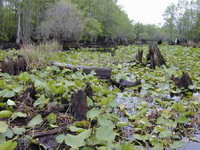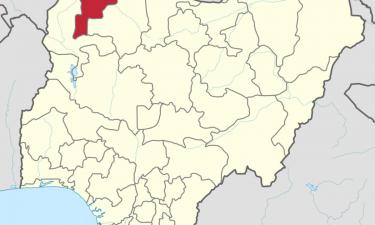Authorities forbid Florida residents to return to homes because of wildfire
Authorities reopened two highways crossing north Florida into Georgia before dense wildfire smoke forced them to halt traffic, while hundreds of Florida residents waited to return to their threatened homes.

Officials said Sunday that the wildfire that had raced through the Okefenokee Swamp in southeast Georgia and into Florida had charred more than 233,700 acres (94,577 hectares) - or about 365 square miles (945 square. kilometers) - since it was started by lightning a week ago.
Officials warned that storms in the forecast Sunday could bring either much-needed rain or lightning.
Authorities reopened 90 miles (145 kilometers) of Interstates 75 and 10 for a couple of hours Sunday morning after wind helped push the heavy smoke away from the highways. But they were later forced to close 35 miles (56 kilometers) of I-75 from the Florida-Georgia state line to Lake City, Florida, as well as a 40-mile (64-kilometer) stretch of I-10 in Florida, from Live Oak to Sanderson.
A 15-mile stretch of I-75 from Valdosta, Georgia, to the Florida state line remained open Sunday.
About 570 residents were not being allowed to return to 150 homes evacuated between I-10 and the Florida-Georgia state line.
Firefighters working Saturday and through the night to control the blaze got help from previous prescribed burns near Lake City, Florida officials said.
"The fire burned into an area of the Osceola National Forest that had done a prescribed burn in the winter, so there was less fuel to burn," said C.J. Norvell, part of a joint federal-state forestry management team.
The fire started May 5 in the middle of the Okefenokee National Wildlife Refuge. It took just six days to grow larger than another wildfire that has burned nearly 121,000 acres (48,968 hectares) of Georgia forest and swampland over more than three weeks. The small fire was started by a tree falling on a power line.
The Okefenokee National Wildlife Refuge and Georgia's Steven C. Foster State Park inside it remained closed.
Haze from the fires had traveled as far south as the Miami area, about 340 miles (547 kilometers) away.
Elsewhere, a blaze feeding on drought-stricken forest in northern Minnesota was only 15 percent contained as of Sunday. Meteorologists said there was a 40 percent of thunderstorms Sunday. They could produce the first significant rainfall in the parched area in almost a week, but the hope of rain was outweighed by the threat of wind gusting to 25 mph (40 kph).
"We don't think the rain is going to help us a whole lot," said Mark Van Every, a spokesman for the firefighting effort.
The fire had closed about half of the 57-mile(92-kilometer)-long Gunflint Trail, a key route from Grand Marais into the Boundary Waters Canoe Area wilderness that is dotted with resorts and lake homes.
Officials said Sunday the fire had destroyed 133 buildings, including 61 residences. They estimated the value of buildings lost at $3.7 million (2.74 million EUR).
Off the coast of Southern California, continued cool weather Sunday helped firefighters on Santa Catalina Island maintain control of a blaze that had threatened the resort community of Avalon.
The 4,200-acre (1,700-hectare) or 6.5-square-mile (17-square-kilometer) fire was 69 percent contained Sunday and was expected to be encircled by Tuesday evening, Los Angeles County Fire Inspector Scott Ross said. One home and six businesses burned Thursday but no one was seriously injured.
Businesses were open again in the seaside resort town of Avalon as most of the 4,000 evacuated residents had returned to the island, where damage was estimated at $2.1 million (1.56 million EUR).
Subscribe to Pravda.Ru Telegram channel, Facebook, RSS!




